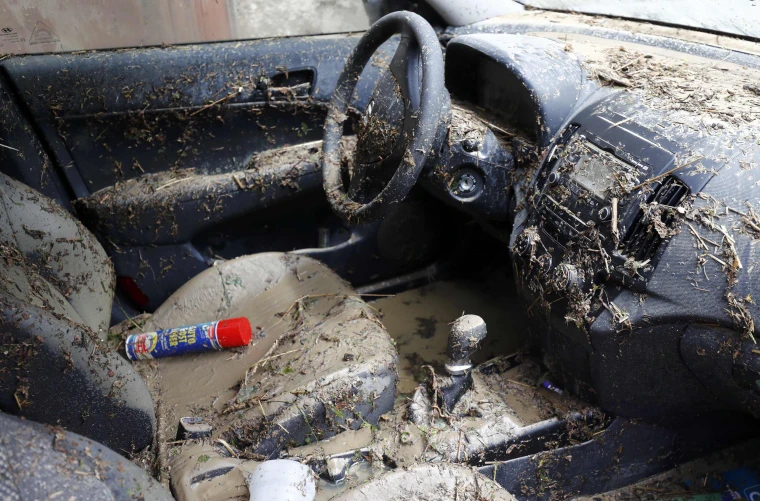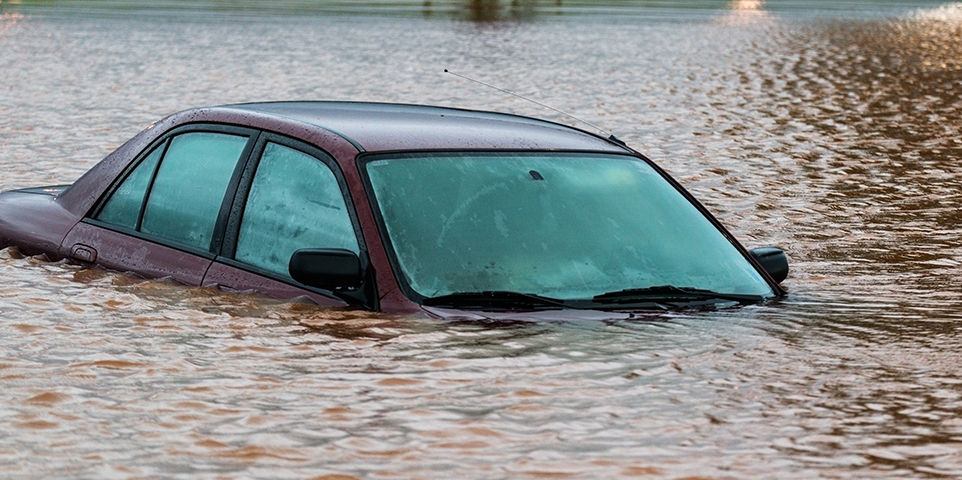When a car gets flooded, owners are often faced with a tough decision: should they attempt to restore the vehicle themselves or hire a professional? Both options come with their own set of challenges, making it a crucial decision for any car owner. On one hand, DIY restoration may seem like a more affordable option, but it requires extensive knowledge and time. On the other hand, professional restoration services can quickly drain your wallet.
Dealing with the aftermath of a flooded car can become a significant financial burden, leading many to seek quick and efficient financial solutions. In these situations, turning to the best online loan app can be a lifesaver, helping car owners cover unexpected repair costs without breaking the bank. Websites like allthebestloan.com are valuable resources for comparing loan options and finding the right financial solution for such emergencies.
According to Mikka Montero, a financial expert renowned for her insights on managing big expenses, navigating the costs associated with car restoration can be tricky. She emphasizes the importance of finding the balance between affordability and quality, ensuring that owners avoid financial turmoil while getting their vehicle back on the road safely.
Understanding the Damage Floods Cause to Cars
Floodwater can wreak havoc on vehicles, causing a wide range of issues that can be difficult and costly to repair. One of the most common problems is engine damage. If water gets into the engine, it can lead to hydrolocking, a condition where the engine seizes due to water entering the cylinders. This kind of damage often requires extensive repairs or even a complete engine replacement.
Another significant concern is electrical system failure. Modern cars rely heavily on electronics, from the ignition system to the dashboard controls. Floodwater can short-circuit these systems, causing malfunctions that might not appear immediately but can lead to expensive repairs down the road. Additionally, flooded cars are at high risk for mold growth, especially in the upholstery and interior, creating not only unpleasant odors but also potential health hazards if not treated properly.
Corrosion is another serious issue caused by floodwater. Rust can quickly form on the car’s metal parts, especially in areas that are difficult to reach and clean. This corrosion can compromise the car’s structural integrity and lead to long-term problems if not addressed promptly.
Both DIYers and professionals must thoroughly assess the extent of the damage before deciding on the best restoration approach. Even minor water exposure can lead to hidden issues, and without a full evaluation, the restoration process can miss critical repairs, potentially leading to bigger problems in the future.
DIY Restoration: Pros and Cons
Opting for a DIY approach to restoring a flooded car can be appealing, especially for those who enjoy working on their own vehicles. There are several benefits to consider:
Pros:
- Cost-saving: The most significant advantage of DIY restoration is the money you save on labor costs. Professional mechanics and technicians can be expensive, and by doing the work yourself, you only need to cover the cost of materials and parts.
- Personal satisfaction: For those who enjoy hands-on work, fixing a car yourself can be deeply rewarding. Completing a challenging task, like restoring a flooded vehicle, brings a sense of accomplishment.
- Opportunity to learn new skills: Taking on such a project offers the chance to expand your knowledge and expertise in car mechanics, which could be valuable for future maintenance and repairs.
Cons:
- Lack of expertise: While DIY can save you money, it also comes with risks. Without professional training, you may overlook serious issues, like hidden electrical problems or structural damage, which can lead to bigger and more costly repairs down the line.
- Time-consuming and physically demanding: Restoring a flooded car is no small task. It can take considerable time to diagnose and fix the damage, and the process can be physically exhausting, especially if you don’t have the right tools or equipment.
- Safety hazards: Incomplete or incorrect restoration work could lead to safety hazards. For example, improperly addressed electrical or mechanical issues can cause accidents or further damage, putting both you and your vehicle at risk.
Professional Restoration: Pros and Cons
For those who prefer not to take on the challenge of restoring a flooded car themselves, professional restoration services offer an alternative. This option comes with its own set of advantages and disadvantages:
Pros:
- Expertise in assessing all forms of flood damage: Professionals are trained to identify and address the wide range of issues that floodwater can cause, from engine damage to hidden electrical failures. Their expertise ensures that nothing is overlooked, providing peace of mind that your car will be restored to a safe and functional condition.
- Access to specialized tools and equipment: Professional repair shops have access to advanced diagnostic tools and specialized equipment that most DIYers don’t. This allows them to assess the damage accurately and perform repairs more efficiently and effectively.
- Warranty or guarantees on the work done: One of the biggest advantages of professional restoration is the warranty or guarantee that often comes with the work. This means if something goes wrong after the repairs, you’re covered, which reduces long-term risks.
- Faster turnaround time compared to DIY: Given their experience and tools, professionals can often complete the restoration process much faster than a DIY job, allowing you to get your car back on the road sooner.
Cons:
- High upfront costs: The main downside to professional restoration is the cost. Labor fees, parts, and other expenses can add up quickly, making it a pricey option. However, financing options, like personal loans or even using the best online loan app, can help spread out these costs, making it more manageable.
- Some professionals may cut corners: While most professionals do high-quality work, there are always exceptions. Some shops may rush through the job or use lower-quality parts to save time and money, so it’s essential to do your research and choose a reputable service provider to avoid future issues.
When to Opt for DIY and When to Hire a Professional
Deciding whether to take the DIY route or hire a professional largely depends on the severity of the flood damage. For some, DIY restoration may be sufficient, but in other cases, professional intervention is not only recommended but necessary.
When DIY is a Good Option:
- Minimal water exposure: If your car only experienced light flooding, such as exposure to shallow water or water limited to non-critical areas like the floorboards or trunk, a DIY restoration could be sufficient. In these cases, you can handle drying out the interior, cleaning carpets, and addressing minor rust or cosmetic issues.
- Familiarity with mechanics: If you have a good understanding of car mechanics and feel comfortable inspecting for hidden damage, you might be able to manage smaller restoration tasks yourself. Basic repairs, like replacing affected filters or draining water from the fuel system, can be handled by an experienced DIYer.
When to Hire a Professional:
- Engine submersion: If water has entered the engine, it’s crucial to seek professional help. Hydrolocked engines can suffer catastrophic damage that requires expert knowledge to repair or replace. Without proper tools and expertise, a DIY attempt could make the situation worse.
- Electrical system failure: Water and electronics don’t mix well, and damage to the electrical system can cause major safety concerns. Professionals have the equipment to diagnose and repair electrical issues thoroughly, ensuring that all systems are safe and functional.
- Extensive damage or mold: When the damage is extensive, involving multiple systems (engine, transmission, brakes), or when mold has set in, a professional restoration will ensure that the car is restored safely and completely.
As Mikka Montero, a financial expert, advises, balancing the costs and risks is key when making this decision. She suggests considering your own technical abilities and the potential long-term costs of incomplete or improper repairs. While DIY can save money upfront, professional services may prevent more expensive issues from cropping up later. According to Mikka, it’s important to weigh the immediate costs of professional services against the risk of hidden damage that could arise from a DIY restoration attempt.
Conclusion
In the end, the choice between DIY and professional restoration for a flooded car hinges on several factors: the extent of the damage, your personal expertise, and your available budget. Minor issues and light flooding may be manageable with a DIY approach, allowing you to save on labor costs and enjoy the satisfaction of completing the work yourself. However, for more severe cases like engine submersion or electrical failure, professional help is crucial to ensure the car is restored safely and effectively.
Careful financial planning plays a critical role in this decision. Whether opting for DIY or professional services, understanding the costs involved and how to cover them is essential. With guidance from experts like Mikka Montero, who emphasizes the importance of balancing costs and risks, you can navigate the restoration process without putting unnecessary strain on your finances. Utilizing tools like the best online loan app and consulting resources like allthebestloan.com can help you find the financial support you need to get your car back on the road safely and efficiently.



